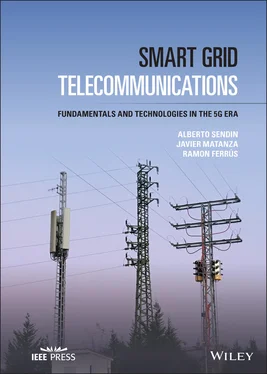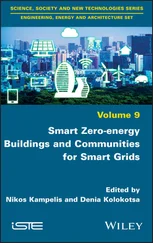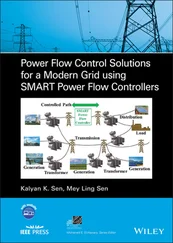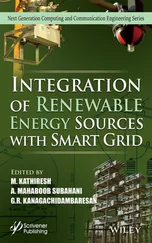Ramon Ferrús - Smart Grid Telecommunications
Здесь есть возможность читать онлайн «Ramon Ferrús - Smart Grid Telecommunications» — ознакомительный отрывок электронной книги совершенно бесплатно, а после прочтения отрывка купить полную версию. В некоторых случаях можно слушать аудио, скачать через торрент в формате fb2 и присутствует краткое содержание. Жанр: unrecognised, на английском языке. Описание произведения, (предисловие) а так же отзывы посетителей доступны на портале библиотеки ЛибКат.
- Название:Smart Grid Telecommunications
- Автор:
- Жанр:
- Год:неизвестен
- ISBN:нет данных
- Рейтинг книги:3 / 5. Голосов: 1
-
Избранное:Добавить в избранное
- Отзывы:
-
Ваша оценка:
- 60
- 1
- 2
- 3
- 4
- 5
Smart Grid Telecommunications: краткое содержание, описание и аннотация
Предлагаем к чтению аннотацию, описание, краткое содержание или предисловие (зависит от того, что написал сам автор книги «Smart Grid Telecommunications»). Если вы не нашли необходимую информацию о книге — напишите в комментариях, мы постараемся отыскать её.
Discover the foundations and main applications of telecommunications to smart grids Smart Grid Telecommunications,
Smart Grid Telecommunications
Smart Grid Telecommunications — читать онлайн ознакомительный отрывок
Ниже представлен текст книги, разбитый по страницам. Система сохранения места последней прочитанной страницы, позволяет с удобством читать онлайн бесплатно книгу «Smart Grid Telecommunications», без необходимости каждый раз заново искать на чём Вы остановились. Поставьте закладку, и сможете в любой момент перейти на страницу, на которой закончили чтение.
Интервал:
Закладка:
1.6.7 Distributed Intelligence
There has been a recurrent discussion in utility industry around the IT and Telecommunication aspects of ICTs, when it comes to the availability of both in grid asset sites.
Computing power and telecommunications have been at large scarce resources. This fact, connected to the evolution of some traditional control system applications (i.e., SCADA), has configured different historical trends when deciding if system intelligence had to be distributed or centralized.
If we take the IT component, processing power has been expensive and bulky in the old times. At the same time, SCADAs started at power plants and PSs to automate operations locally (see Chapter 5) and that long‐distance Telecommunications were not readily accessible in many remote areas. These circumstances created an electric power system control structure that installed part of its computing power in distributed premises (substations).
However, the expansion of telecommunication capabilities, combined with the size reduction of computing power and the enhanced automation capabilities of evolving SCADAs, pushed a wave of SCADA system concentration that leveraged the cost savings produced by synergies in the SCADA operations. Thus, distributed intelligence started to diminish.
SCADA evolution was parallel to remote meter reading systems. The situation of these systems changed the perspective of the telecommunications access to substations. From the need to access a few PSs of early SCADAs, to the need to access many SSs where high‐throughput connectivity was not affordable, changed again the approach. At this point, the idea of “data concentrators” (see Chapter 5) appeared, as a way to downsize central MDM systems with a certain distributed intelligence.
Those two parallel stories of Smart Grid systems embryos, different in the use of ICT components, have reached our days, and numerous initiatives in Smart Grids show the influence of both.
In the telecommunications domain, the availability of high‐throughput connectivity is common today, and telecommunication bottlenecks are not to be expected in urban, suburban, or populated rural areas. Thus, the distributed intelligence concept is no longer generally a must. On the contrary, the general availability of communications to access all SSs leaves the decision on where to place computing power to utilities.
However, telecommunications themselves, and for their purpose of adapting to the various market needs, are witnessing two trends or types of systems in their evolution:
Internet of Things (IoT)‐type of connectivity, as a connectivity intended to provide some sort of low‐end telecommunication capabilities to any location.
Telecommunications network intelligence closer to the network end‐points, helping to provide low latency services that might be demanded by some users.
Thus, another level of complexity is added to the Smart Grid distributed intelligence discussion that should consider these new trends of telecommunications market.
1.6.8 Resilient Telecommunication Networks and Services
Two different concepts mix when referring to resiliency in telecommunications: reliability and resiliency. Before we refer to them, we need first to focus our attention on the availability concept, prevalent in the measurement of the service conditions.
Availability is defined in ITU‐T E.800 as the ability “of an item to be in the state to perform a required function at a given instant of time or at any instant of time within a given time interval, assuming that the external resources, if required, are provided.” When the network is available, its performance can be observed and measured. Many ITU‐T and ITU‐R recommendations define availability objectives. Few references, however, exist for Smart Grid‐related telecommunication services, although it can be broadly assumed that the strictest Smart Grid services need 99.999% availability (this means 315.36 seconds of unavailability during the year).
To have networks and services in the “available” state, reliability concept appears. It is defined in ITU‐T E.800 as “the probability that an item can perform a required function under stated conditions for a given time interval.” Reliability is different to resiliency. Resiliency can be defined as “the ability of an entity, system, network or service to resist the effects of a disruptive event, or to recover from the effects of a disruptive event to a normal or near‐normal state” [62]. Thus, while reliability focuses on preventing that the system fails, resilience focuses on recovering when it fails.
Resilience in telecommunications implies carrier‐grade (carrier‐class) network elements (equipment with redundancy in its vital parts – such as power supply), reliable design of network links (with the proper availability assurance), protection of paths through redundant routes that will not fail simultaneously, licensed spectrum usage (legally protected not be interfered), battery backup, etc. While these elements can be properly controlled in private networks, it can just be controlled through SLAs in commercial services.
Finally, security or cybersecurity aspects need to be mentioned. Security aspects must be considered even if only related to the availability of networks, as attacks can turn any network or service into either a non‐performing one or a non‐available one (e.g., denial‐of‐service [63]). As an example of this importance, North American Electric Reliability Corporation (NERC) has developed and enforced regulations that demonstrate the importance of security in electric utilities. Security is not just an add‐on of telecommunication networks, but a by‐design aspect that needs to be present at any stage of the telecommunication service and its network components (technology definition, products implementation, deployment, operations, and delivery).
1.6.9 Telecommunications Special Solution for Utilities
The deployment of Smart Grids involves a transformation of the electric grid infrastructure, specifically Distribution grid infrastructure. This infrastructure is closely connected to the grid. The fact that the electric infrastructure has many aspects in common with the infrastructure aspects of telecommunication networks opens the door for synergies. In particular, there are several elements that are available for utilities, and in some cases, exclusive to them, that are used to deploy telecommunications infrastructures for the Smart Grid:
Rights of way. Rights of way have been necessary to deploy substations and power lines and their associated sites, towers, poles, and ducts. These infrastructure elements can host other cables (not only power lines) for telecommunication purposes. In fact, there is an abundance of examples of this carriers' carrier business model that has been used for the expansion of existing telecommunication networks [64]. Legislative bodies around the world have also granted the use of these existing rights of way to TSPs.
Optical fiber cables, unique to utilities. To take advantage of towers, ducts, and cables where optical fiber can be deployed in close proximity to HV power lines, special cables have been developed and are today of wide‐spread use (see Chapter 2). HV and LV solutions exist to carry optical fiber close to or inside power cables as well.
Towers and poles are used and can host radio base station to gain height and improve coverage within existing assets. This possibility minimizes costs and quickens deployments of radio (wireless) solutions.
Power Line Communications (PLC) are the way to support the transmission of telecommunication signals inside electric power cables. This technology is as diverse and versatile as radio (wireless) and has helped utilities through all ages to communicate distant points among them, for voice communication purposes, low (64 kbps) and high (200 Mbps) data rate needs.
Читать дальшеИнтервал:
Закладка:
Похожие книги на «Smart Grid Telecommunications»
Представляем Вашему вниманию похожие книги на «Smart Grid Telecommunications» списком для выбора. Мы отобрали схожую по названию и смыслу литературу в надежде предоставить читателям больше вариантов отыскать новые, интересные, ещё непрочитанные произведения.
Обсуждение, отзывы о книге «Smart Grid Telecommunications» и просто собственные мнения читателей. Оставьте ваши комментарии, напишите, что Вы думаете о произведении, его смысле или главных героях. Укажите что конкретно понравилось, а что нет, и почему Вы так считаете.












